By Nayantara Parpia
On Sunday, 25th April, a few of us in Singapore had the privilege of attending a very special dance recital, ‘Arohana’ – the Kathak Manch Pravesh of the young and multi-talented Sindhu Achudan, at the Goodman Arts Centre Black Box. Congratulations to the entire team at Apsaras Arts and my dear friend Shivangi for achieving this huge milestone. May there be many more such gems to emerge from the institute! My heart-felt wishes to the young star of the show, Sindhu Achudan, and her supportive family.”
On Sunday, 25th April, a few of us in Singapore had the privilege of attending a very special dance recital, ‘Arohana’ – the Kathak Manch Pravesh of the young and multi-talented Sindhu Achudan, at the Goodman Arts Centre Black Box.
The stage was set in a traditional yet very striking way. On the right hand side was a beautifully decorated Nataraja statue, two glimmering brass diyas and photos of the late founders of Apsaras Arts, Shri S Sathyalingam and Smt Neila Sathyalingam. And on the left hand side, the accompanying musicians were grandly seated on separate pedestals, their artistic auras further illuminated by individual beams of ethereal light. On the backdrop was the projection of a temple archway, simple and beautiful, altogether creating a divine and inviting ambience for this intimate gathering.
Sindhu, dressed in a beautiful fuschia lehenga, commenced her recital with a Dhrupad, invoking the Lord of dance himself. “Shiva Shiva Shiva….. Shankara Adideva, Shambhu Bholanath, Yogi Mahadeva…” Set to Sool Taal and Raag Adana, this Dhrupad was popularized by the iconic Dhrupad vocalist duo, the Gundecha Brothers. True to the powerful music composition, the piece was choreographed by Shivangi with strong, statuesque stances depicting Shiva in all His glory. The lyrical depiction was interspersed by short ‘Nritta’ segments, which Sindhu pulled off well for an impactful opening. It takes a dancer many years to develop the strength and focus required to embody Shiva, so one could see that Sindhu’s background in Bharatanatyam naturally helped her in this aspect, albeit through a new and different medium.
As per the traditional repertoire, next was the Nritta showcase in Teentaal, a cycle of 16 beats. Sindhu began with ‘Vilambit laya’, the slow tempo of the Taal, with ‘thaat’ – where the dancer’s body slowly awakens to the beat of the Taal, flowing with the soothing lehra, highlighting the ‘sam’ or the first beat of each cycle, with a beautiful pose. There was also the traditional Aamad, Uthaan, Paranaamad and Tatkaar, gradually leading up to ‘Drut Laya’, the fast tempo of the taal, featuring both ‘Nritta’ and ‘Nritya’ components like Tukda, Tihai, Paran, Parmelu, Gat Nikas, Gat Bhav and Rela, many of which were carefully passed down by Shivangi’s gurus to her, and now to her disciples. It was wonderful to see Sindhu dance tirelessly, showcasing a wide range of technical compositions with graceful movements, rhythmic variations like ‘tishra jaati’, ‘padhant’ (recitation) and ‘bhaav’.
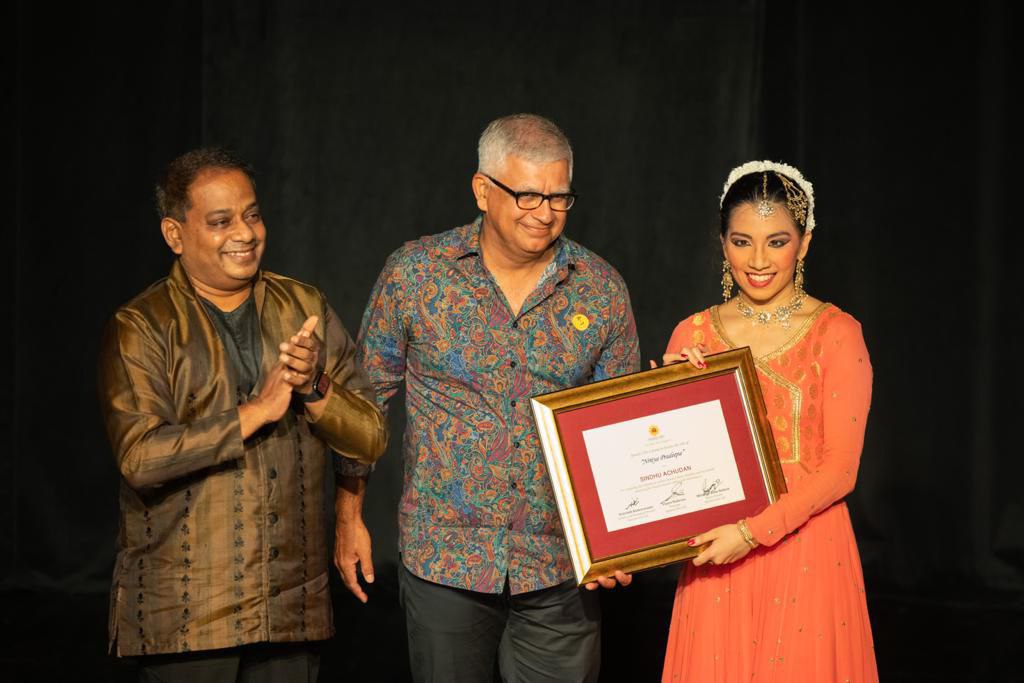
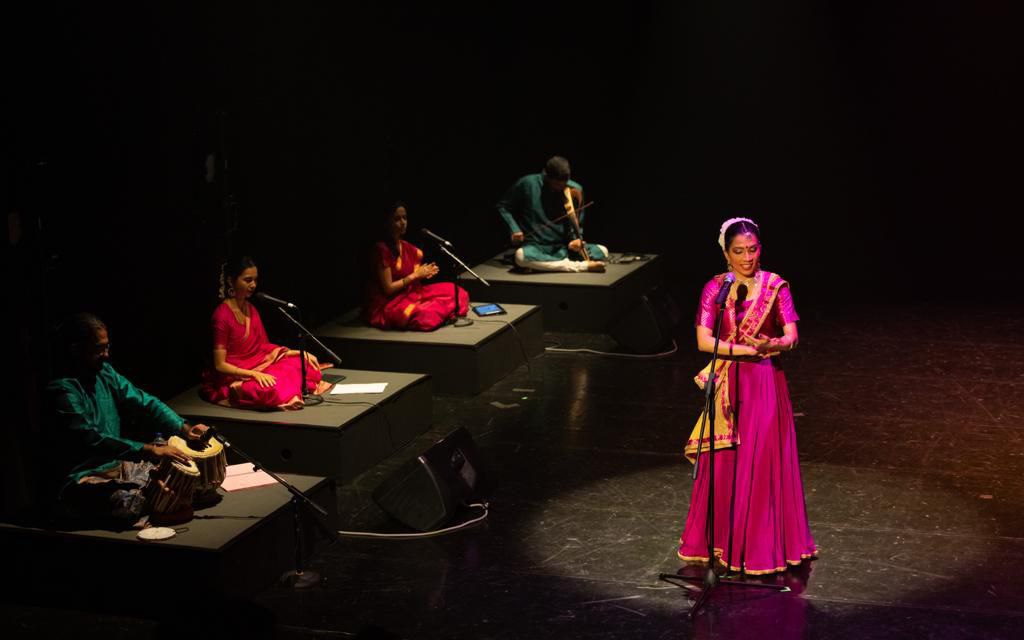
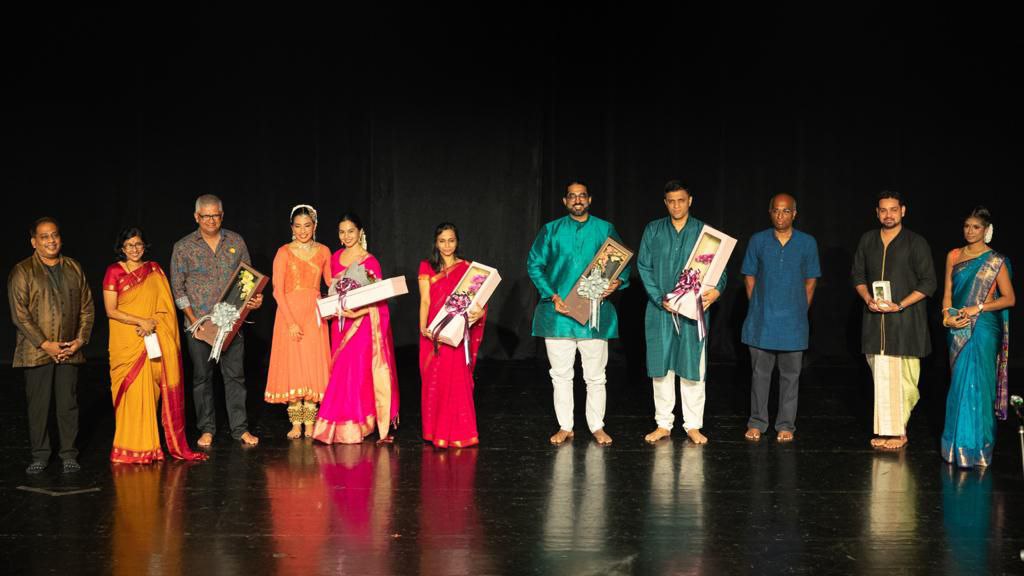
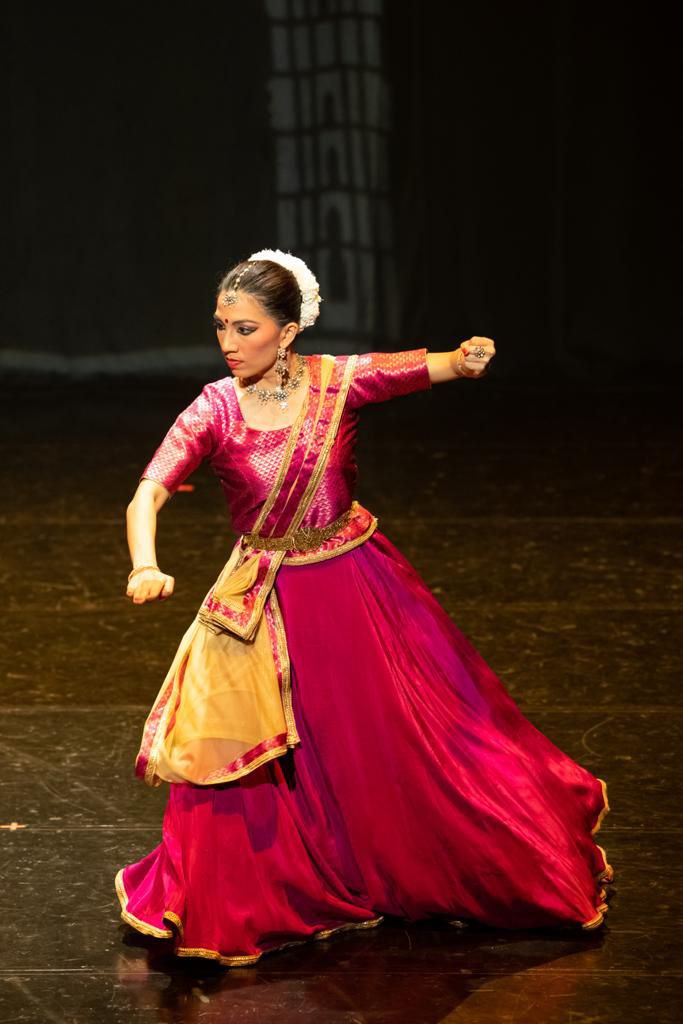

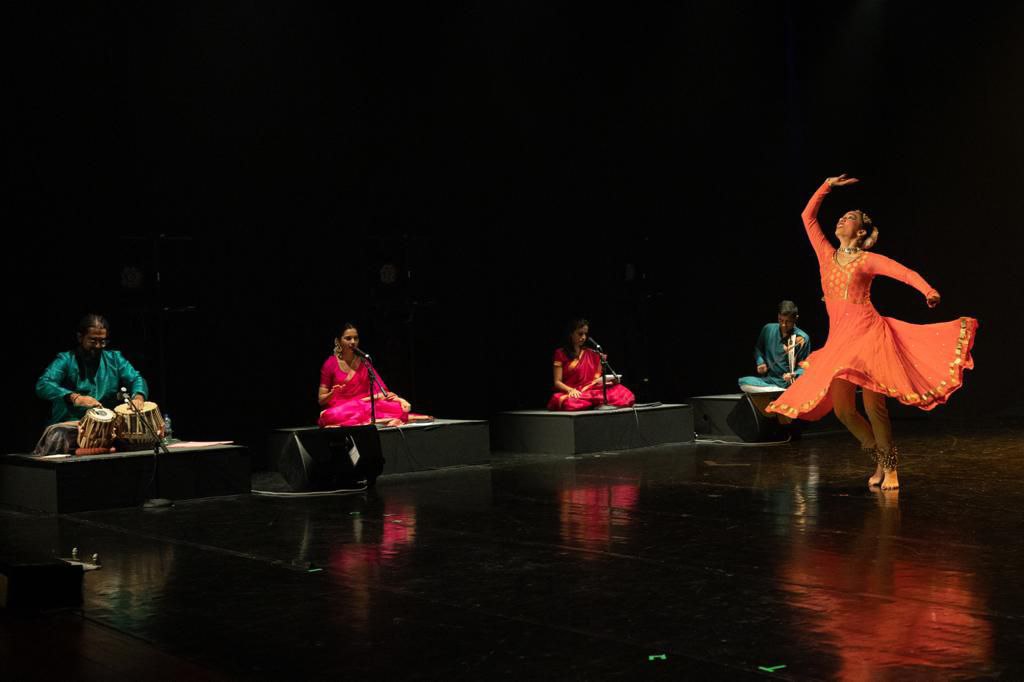
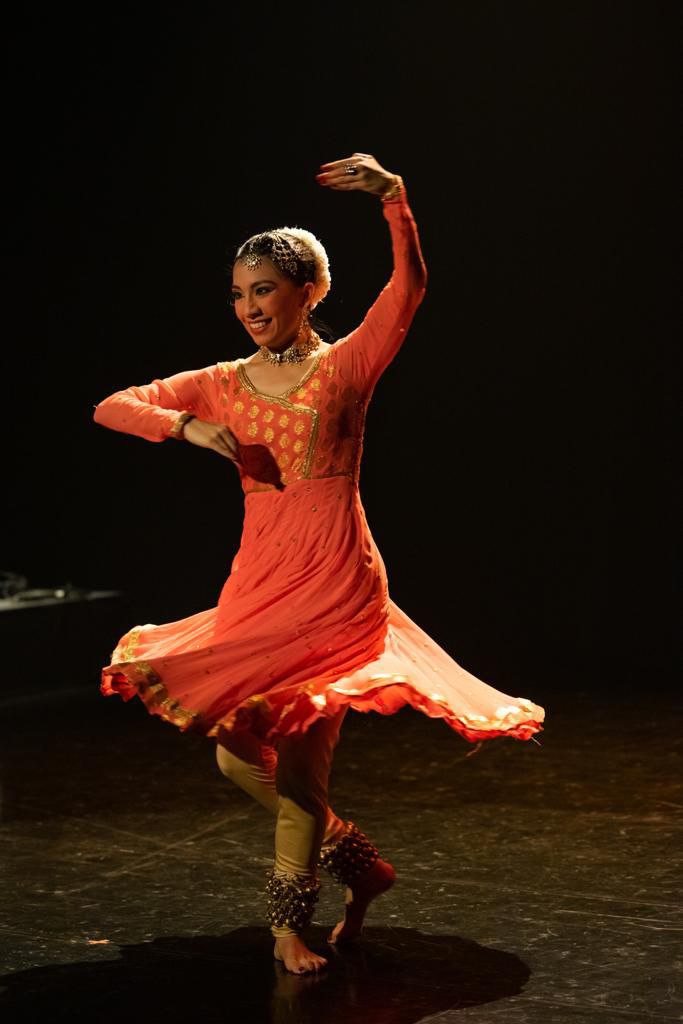
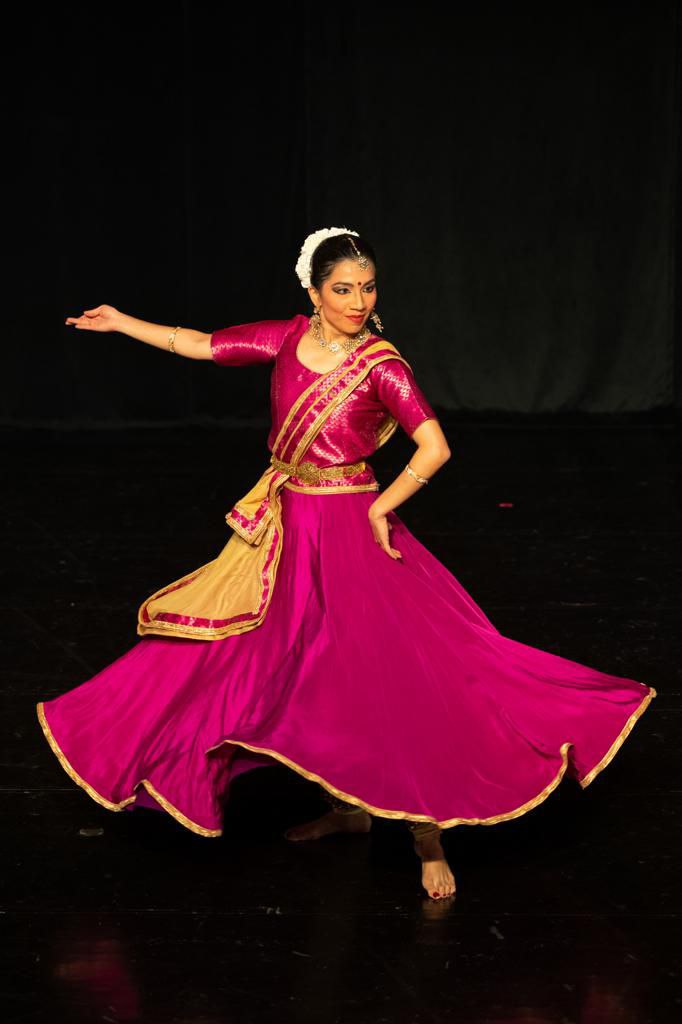
The third piece for the evening was a ‘Thumri’ – “Kahe Karata Mose”, depicting the mischief of Lord Krishna teasing young Radha. A classic ‘bandish’, bringing out the beauty and subtlety of facial expressions in Kathak. Sindhu, with her youthful and vibrant face, portrayed the innocence of Radha very sweetly. She concluded her performance with a Tarana in the 10 beat time cycle Jhaptaal, set to Raag Darbari, a well-known musical composition by Pandit Birju Maharajji. Shivangi’s choreographies always carry a well-balanced sequence of ‘Tandav’ and ‘Lasya’ movements, in tune with the musicality of each composition. Sindhu appeared for the last presentation, dressed in a very pretty peach Anarkali, the other costume style of Kathak, credited to its Islamic heritage – a perfect match for the ‘Darbari’ tarana. She moved with grace, confidence and a vivacious smile, reflective of the inner joy that comes only with hard work and perseverance.
As Aravinth anna rightly quoted Neila mami, “The centre of gravity on a dancer’s stage is actually on the side, where the musicians are seated.” How wonderful it is to experience classical dance with Live musicians, something we see a little less of these days, due to budget and space constraints. But it is so important for teachers and dance schools to invest in live accompaniment, to cultivate that tradition in the next generation, and to give young dancers the experience of both the challenge as well as the collective energy of multiple artists creating art together on stage. Tabla artist Lalit Kumar Ganesh, vocalist Pratima Bellave Ganesh and violinist Bombay V Anand provided excellent accompaniment, bringing the dance performance alive. Often, during the recital, my gaze would shift to them, as I danced along in my seat!
On a personal note, I have been associated with Apsaras Arts from Day 1 of the opening of its Kathak department with just one student, back in 2014. With the steady guidance of Shivangi Dake Robert, the Kathak team has come very far in just a few years. It fills me with pride to witness the school as well as the overall Kathak community in Singapore blossom more and more with each passing year.
I must add that considering the climate in most parts of the world at the moment, with respect to Covid, I will admit that as residents of Singapore, just dressing up and having a live event to go to was in itself very special. Thanks to everyone who has worked so hard to give us fortunate few such a memorable evening. Congratulations to the entire team at Apsaras Arts and my dear friend Shivangi for achieving this huge milestone. May there be many more such gems to emerge from the institute! My heart-felt wishes to the young star of the show, Sindhu Achudan, and her supportive family. On behalf of everyone who was present or watching her virtually, I wish her all the very best for a long and joyous journey with Kathak and many more years of deeper exploration and artistic growth.
By Nayantara Parpia
Kathak Dancer and Teacher
Founder of Tridhaara Institute of Kathak









